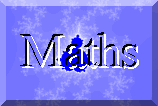
![[DIR]](figures/back.gif) Parent Directory
Parent Directory
Current induced switching of magnetisation
When a current passes through a magnet (the polarising magnet) it becomes spin polarised in the direction of the magnetic moment. If the current flows through a second magnet (the switching magnet) with a different orientation of magnetisation, it induces a torque on the moment. If the current is strong enough it can reverse the orientation of the switching magnet's moment. This effect is called "current induced switching of magnetisation", and can be used to write information in magnetic storage media.

Papers
In` PRB 71, 054407 (2005) a self-consistent theory of the current-induced switching of magnetization using nonequilibrium Keldysh formalism is developed for a junction of two ferromagnets separated by a nonmagnetic spacer in the ballistic limit. It is shown that the spin-transfer torques responsible for current-induced switching of magnetization can be calculated from first principles. The calculations for Co/Cu/Co show that the critical current for switching is in good agreement with experiment.
In a magnetic nanopillar, microwave oscillations of the magnetization of one0 magnetic layer can be driven by spin-polarized current emitted from another magnetic layer. The conditions for this to occur in zero applied field are formulated in terms of the two components of the spin-transfer torque. One simple route to achieve microwave generation is to ensure that these components have opposite sign. Quantum-mechanical calculations are presented that show how this may be achieved by a suitable choice of the oscillating magnet thickness: J.Phys: Cond. Matt. 19 165210 (2007)
Review Articles
Current-induced switching of magnetisation: in Nanomagnetism, ed. D.L.Mills, J.A.C Bland, Elsevier (2006), page 273.
